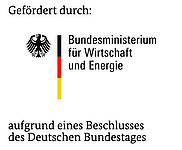The HSZG lives up to its reputation as an "energy university".

Prof. Dr. Stefan Kornhuber and Dr.-Ing. Stefan Kittan, together with the HSZG, have patented an innovative method for assessing the condition of transformers that combines classic health index (HI) methods with entropy-based methods.
The condition assessment of transformers plays an essential role in times of climate change. In order to achieve the climate targets set by the German government, the system of our energy supply is being restructured - away from a few centralized, base-load capable large power plants towards many decentralized, volatile energy sources. This trend reversal leads to an increased load on the transmission grid and its components. At times, the renewable energies lead to a load reversal and thus to loads on the grid components that have not yet been considered. The sluggish pace of expansion of the transmission grid further exacerbates this situation. As a result, the expected service life and operational reliability of the individual components is decreasing.
Transformers are essential components of transmission grids. Their reliability assessment is therefore of particular importance. In order to ensure reliable grid operation in the current energy policy situation, Dr. Stefan Kittan and Prof. Stefan Kornhuber have developed new assessment methods for distribution and power transformers as part of the Smart-TR project "Condition assessment of power and distribution transformers in electrical energy technology".
Health index (HI) methods are an important tool for assessing the condition of transformers. Here, a large number of measured values are weighted and summarized to form a key figure. This indicator can be used to draw conclusions about the ageing of the transformer. There are several HI methods, which differ in the number and type of measured values taken into account. In addition, the focus of the respective method is controlled by different weighting. One disadvantage of HI methods is that they can only be used if all the necessary measurement data is available. This disadvantage is all the more serious in view of the fact that certain measurements can only be carried out at great expense.
A newer, entropy-based HI method compensates for this disadvantage by determining the necessary weighting factors from the measurement data. However, this had previously entailed a new disadvantage: entropy-based HI values are not comparable with each other. As a result, it is no longer possible to draw absolute conclusions about the ageing condition. It is only possible to detect when the condition deteriorates.
As part of their scientific work, Prof. Kornhuber and Dr. Stefan Kittan have found a way to compensate for this disadvantage by combining parts of the classic HI methods with the entropy-based method. The scientists have successfully patented this innovative approach together with the Zittau/Görlitz University of Applied Sciences.
The project "Condition assessment of power and distribution transformers in power engineering (Smart Grid - Smart Monitoring)" is funded by the Federal Ministry of Education and Research as part of the funding line Research at universities of applied sciences with companies(FHprofUnt) (SC03FH026PB5).


The patenting of the invention was supported by

